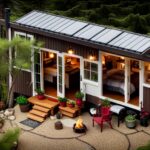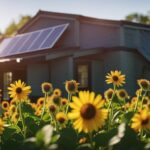Beginners Guides
Can Inturn On Wqter Heater Only When I Need It Tiny House

Living in a small home means that every bit of space and each energy unit is crucial. As someone who resides in a tiny house, I’ve honed the skill of being both efficient and savvy in all facets of my routine, particularly when it comes to heating my water. In my effort to reduce energy use while still maintaining a comfortable lifestyle, I’ve found a strategy that allows me to activate my water heater solely at times of necessity, ensuring I don’t compromise on comfort or warmth.
In this article, I will delve into the intricacies of understanding the energy usage of a water heater in a tiny house, and explore the pros and cons of selectively using it. I will also guide you through evaluating your water heating needs, exploring alternative options, and implementing energy-saving practices.
Additionally, I will discuss the importance of considering the climate and weather conditions, utilizing water-saving techniques, and monitoring and adjusting your water heating schedule.
So, if you’re ready to take control of your water heating in your tiny house, join me on this journey to discover how you can efficiently and effectively heat your water only when you need it.
Key Takeaways
- Saving energy in water heating can be achieved by turning on the water heater only when necessary.
- Choosing a water heater designed for small spaces or a tankless water heater can reduce energy consumption.
- Insulating the water heater and pipes helps retain heat and minimize energy waste.
- Selectively using the water heater can lower energy usage, reduce carbon footprint, save costs, and extend its lifespan.
Understanding the Energy Usage of a Water Heater in a Tiny House
You can easily control when to turn on the water heater in your tiny house, allowing you to save energy and only heat water when you need it. Evaluating the energy efficiency of your water heater is crucial in order to make cost-effective choices.
Consider choosing a water heater that is specifically designed for small spaces, as it will consume less energy. Tankless water heaters are also a great option, as they only heat water on-demand, eliminating the need for standby energy consumption. Additionally, insulating your water heater and pipes will help retain heat, reducing energy waste.
However, there are pros and cons to selectively using the water heater. Let’s explore those in the next section.
Pros and Cons of Selectively Using the Water Heater
By selectively using the water heater, one can enjoy the convenience of hot water while minimizing energy consumption. There are several pros and cons to consider when deciding whether to selectively use your water heater in a tiny house:
Pros:
- Reduced energy consumption: By only turning on the water heater when needed, you can significantly lower your energy usage and save on utility bills.
- Environmental benefits: Using less energy means reducing your carbon footprint and contributing to a more sustainable lifestyle.
- Cost savings: Lower energy consumption translates to cost savings in the long run, which is especially important for tiny house dwellers looking to minimize expenses.
- Increased lifespan: By using the water heater less frequently, you can extend its lifespan and avoid costly repairs or replacements.
Cons:
- Inconvenience: Selectively using the water heater may require planning and adjusting your daily routine to ensure hot water is available when needed.
- Potential for cold showers: If you forget to turn on the water heater or misjudge your hot water needs, you may end up taking a cold shower.
Considering these factors, evaluating efficiency and cost comparisons becomes essential when deciding how often to use your water heater. Transitioning into the subsequent section about evaluating your water heating needs, it’s crucial to assess your specific requirements to make informed decisions.
Evaluating Your Water Heating Needs
Make sure to carefully assess your specific requirements when it comes to evaluating how much hot water you need. Evaluating water temperature is an essential step in determining the capacity of the water heating system you require.
Consider factors such as the number of people in your tiny house, their daily hot water usage, and the peak times when hot water is in high demand. Additionally, take into account any specific activities that may require higher water temperatures, such as dishwashing or showering.
By evaluating your water heating needs, you can ensure that you choose the right water heating system that meets your requirements efficiently.
Exploring alternative water heating options is the next logical step, as it allows you to consider different approaches and technologies that may better suit your specific needs.
Exploring Alternative Water Heating Options
When it comes to exploring alternative water heating options for my tiny house, there are three key points to consider:
- Tankless water heaters are a great option for their energy efficiency and space-saving design.
- Solar water heaters utilize the power of the sun to heat water, making them a sustainable and cost-effective choice.
- Lastly, heat pump water heaters are highly efficient and use electricity to transfer heat from the air or ground to heat water.
Tankless Water Heaters
Tankless water heaters provide hot water on demand, perfect for conserving energy in a tiny house. With tankless water heater installation, you can enjoy hot water whenever you need it without the need for a storage tank. This eliminates standby heat loss and reduces energy consumption, making it an efficient option for your tiny house.
The cost of tankless water heaters may be higher compared to traditional water heaters, but the long-term energy savings can outweigh the initial investment. Additionally, tankless water heaters are compact and space-saving, making them an ideal choice for a small living space.
Transitioning into the subsequent section about solar water heaters, another alternative water heating option, allows you to further explore sustainable and eco-friendly ways to meet your hot water needs.
Solar Water Heaters
Now that we’ve discussed tankless water heaters, let’s delve into the world of solar water heaters.
Solar water heaters are an excellent option for those looking to reduce their energy consumption and carbon footprint. The installation process for a solar water heater involves placing solar panels on your roof or in an area that receives ample sunlight. These panels absorb the sun’s energy and transfer it to a water storage tank, where it is used to heat the water.
One of the major benefits of solar water heaters is their cost-effectiveness in the long run. Although the initial installation may be expensive, solar water heaters can significantly reduce your monthly energy bills. Additionally, solar water heaters are environmentally friendly, as they rely on renewable energy.
As we move forward, let’s explore the advantages of heat pump water heaters.
Heat Pump Water Heaters
To save on energy costs and reduce your carbon footprint, consider installing a heat pump water heater. This innovative technology uses electricity to move heat from the air or ground to heat your water, similar to how a refrigerator extracts heat from its contents to keep them cool. Heat pump water heaters are highly efficient, making them an excellent choice for tiny houses. In fact, they can be up to three times more efficient than traditional electric water heaters. To give you an idea of the efficiency comparison, take a look at the table below:
| Water Heater Type | Efficiency Rating |
|---|---|
| Heat Pump | 300% |
| Electric Resistance | 100% |
| Gas | 90% |
| Solar | 70% |
By installing a heat pump water heater, you can significantly reduce your energy consumption and save money in the long run. Now let’s explore implementing other energy-saving practices to maximize efficiency.
Implementing Energy-Saving Practices
When it comes to implementing energy-saving practices for water heating, there are several key points to consider.
First, insulating your water heater can significantly reduce heat loss and improve overall efficiency.
Secondly, using a timer or a smart thermostat can help you control when your water heater is turned on, saving energy when it’s not needed.
Lastly, proper maintenance and regular inspections are essential to ensure your water heater is functioning optimally and to address any potential issues before they become major problems.
Insulating Your Water Heater
You can easily insulate your water heater to conserve energy in your tiny house. Insulating your water heater has several benefits, including reducing heat loss and lowering energy consumption.
By insulating the tank and pipes, you can prevent heat from escaping, resulting in less energy needed to heat the water. This insulation also helps to maintain the water temperature for longer periods of time, reducing the frequency of heating cycles.
Additionally, insulating your water heater is a cost-effective solution as it can save you money on your energy bills in the long run.
In the next section about using a timer or smart thermostat, you can further optimize your energy usage by controlling when the water heater operates.
Using a Timer or Smart Thermostat
Installing a timer or smart thermostat allows for better control over the operation of your water heater, resulting in increased energy efficiency and cost savings. Here are four key benefits of using a timer or smart thermostat for your water heater:
- Energy conservation: By scheduling the water heater to turn on only when needed, you can minimize energy waste and reduce your utility bills.
- Convenience: With a timer or smart thermostat, you can easily program your water heater to align with your daily routine, ensuring hot water is available when you need it.
- Manual switch option: Some timers or smart thermostats come with a manual switch feature, allowing you to override the schedule and turn on the water heater manually if required.
- Additional insulation: Along with a timer or smart thermostat, utilizing a water heater blanket can further enhance energy efficiency by reducing heat loss.
Proper maintenance and regular inspections are vital for ensuring the longevity and optimal performance of your water heater.
Proper Maintenance and Regular Inspections
To ensure the efficient operation of my water heater in my tiny house, I not only rely on timers or smart thermostats but also prioritize proper maintenance and regular inspections. By adhering to a maintenance schedule, I can identify and address any potential issues before they become major problems. This includes inspecting the water heater for any signs of corrosion, leaks, or faulty components. Regularly flushing the tank helps remove sediment buildup, improving the heater’s performance and extending its lifespan. To assist you in visualizing the importance of proper maintenance and inspections, consider the following table:
Maintenance Task Frequency Benefits Inspect for leaks Monthly Prevent water damage Flush the tank Annually Improve efficiency Check for corrosion Semi-annually Prevent breakdowns
By diligently maintaining and inspecting my water heater, I can ensure its optimal performance and longevity. Now, let’s delve into considering the climate and weather conditions when it comes to water heater usage.
Considering the Climate and Weather Conditions
When considering the climate and weather conditions, it’s important to take into account the impact of cold climates and winter months.
In these conditions, energy usage tends to increase as heating systems are utilized more frequently.
On the other hand, warm climates and summer months also have their own energy challenges.
There’s an increased use of air conditioning systems and the need to find ways to stay cool while minimizing energy consumption.
Cold Climates and Winter Months
You can easily control the water heater in your tiny house during cold climates and winter months, like a master conductor guiding an orchestra. When evaluating water consumption, it’s important to consider the climate and weather conditions.
In cold climates, it’s crucial to prevent frozen pipes, which can cause serious damage to your tiny house. To do this, you can insulate your water pipes and use a heat tape or pipe heater to keep them warm. Additionally, you can install a thermostat that automatically adjusts the water heater temperature based on the outside temperature. This will ensure that your water stays hot without wasting energy.
As we transition into discussing warm climates and summer months, it’s important to note that controlling the water heater in these conditions requires a different approach.
Warm Climates and Summer Months
Now that we’ve discussed the challenges of cold climates and winter months in relation to water heating in tiny houses, let’s explore how warm climates and summer months can affect our water heating needs.
In these hotter months, we often find ourselves using more water for various purposes such as showers, laundry, and dishwashing. However, it’s important to be mindful of water conservation techniques and reducing water heating costs in order to be environmentally conscious and cost-effective.
To achieve this, there are several strategies you can implement:
- Installing low-flow showerheads and faucets to reduce water usage.
- Insulating your water heater and pipes to minimize heat loss.
- Utilizing natural sources of hot water, such as solar water heaters or heat pumps.
By incorporating these techniques, you can optimize your water heating system’s efficiency, conserve water, and save money on energy bills.
Transitioning into the next section, let’s now explore how we can further maximize water conservation by utilizing water-saving techniques throughout the entire tiny house.
Utilizing Water-Saving Techniques
To maximize water efficiency in your tiny house, try using water-saving techniques like only turning on the water heater when needed. By implementing these water conservation strategies, you can significantly reduce your water consumption and minimize energy wastage.
One effective technique is to install low-flow faucets and showerheads, which decrease the amount of water used without compromising on functionality. Additionally, consider using a graywater system to reuse water from sources such as sinks and showers for purposes like irrigation. Another approach is to insulate your water pipes to reduce heat loss, enabling faster hot water delivery and minimizing the need for continuous heating.
By adopting these water-saving techniques, you can not only reduce your environmental impact but also save on water and energy costs.
Transitioning into the subsequent section about monitoring and adjusting your water heating schedule, it’s essential to find a balance that meets your needs while minimizing waste.
Monitoring and Adjusting Your Water Heating Schedule
Keep a close eye on the clock and adjust your water heating schedule accordingly, ensuring that you strike the perfect balance between warmth and conservation.
Monitoring water temperature is crucial in managing your water heater effectively. By regularly checking the water temperature, you can identify any fluctuations or inefficiencies in your system.
If the temperature is consistently too high or too low, it may be necessary to adjust the water heater settings. Depending on the type of water heater you have, this can usually be done through the thermostat or control panel. Making small adjustments can help optimize energy usage and prevent unnecessary water heating.
Keep in mind that seeking professional advice and consultation is always a wise step when it comes to your water heater. It can provide valuable insights and ensure you make informed decisions for your tiny house.
Seeking Professional Advice and Consultation
When seeking professional advice and consultation for adjusting my water heating schedule in my tiny house, I would consult a plumber or HVAC specialist who has expertise in water heating systems. They can provide valuable insights and recommendations on optimizing the schedule to ensure efficient usage and cost savings.
Additionally, researching local building codes and regulations is crucial to ensure compliance and safety when making any adjustments to the water heating system.
Consulting a Plumber or HVAC Specialist
Contact a plumber or HVAC specialist who can help you figure out the best way to control your water heater in your tiny house. They have the expertise to evaluate your water pressure and troubleshoot common issues that may arise with your water heater. Here are four steps they may take to assist you:
- Assessing your current water heater system and determining if it’s compatible with your tiny house setup.
- Suggesting alternative water heater options that’re more energy-efficient and suitable for your specific needs.
- Installing a water heater timer or programmable thermostat to regulate when the water heater turns on and off.
- Providing advice on proper maintenance and care of your water heater to ensure its longevity and optimal performance.
After consulting with a plumber or HVAC specialist, you can move on to researching local building codes and regulations to ensure that your water heater setup complies with the necessary standards.
Researching Local Building Codes and Regulations
Researching local building codes and regulations is like navigating a complex maze to ensure that my water heating system meets the required standards. It is crucial to understand the building restrictions and obtain the necessary local permits before installing or modifying any water heater in my tiny house. To simplify the process, I have created a table summarizing the key points of my research:
| Building Codes | Permits Required | Restrictions |
|---|---|---|
| Minimum clearance for water heater | Yes | Must be installed in an approved location |
| Ventilation requirements | Yes | Adequate ventilation must be provided |
| Plumbing connections | Yes | Must comply with local plumbing codes |
| Electrical connections | Yes | Must be installed by a licensed electrician |
| Safety features | Yes | Must meet the standards for temperature and pressure relief valves |
By thoroughly researching and understanding the local building codes and regulations, I can ensure that my water heating system is safe, efficient, and compliant with the necessary standards.
Frequently Asked Questions
Can I use a tankless water heater in my tiny house?
Yes, I can use a tankless water heater in my tiny house. The benefits of using a tankless water heater include energy efficiency, space-saving design, and the option to choose between propane or electric models.
Are there any government incentives available for installing energy-efficient water heaters in tiny houses?
Yes, there are government incentives available for installing energy-efficient water heaters in tiny houses. These incentives aim to promote the use of eco-friendly technologies and can help offset the cost of purchasing and installing such systems.
What are some common mistakes to avoid when implementing energy-saving practices for water heating in a tiny house?
Common mistakes to avoid when implementing energy-saving practices for water heating in a tiny house include using an oversized water heater, neglecting insulation, and failing to use a timer or smart thermostat. Best practices include proper sizing, insulation, and efficient temperature control.
How can I effectively monitor and adjust my water heating schedule in a tiny house?
To effectively monitor and adjust my water heating schedule in a tiny house, I can optimize usage and increase efficiency by implementing a system that tracks energy consumption, using smart thermostats or timers to control heating cycles.
What are some potential risks or drawbacks of selectively using the water heater in a tiny house?
Potential risks and drawbacks of selectively using the water heater in a tiny house include a higher risk of bacteria growth due to infrequent use and an inconsistent hot water supply, which may not meet your needs consistently.
Conclusion
In conclusion, managing the water heater in a tiny house requires thoughtful consideration and strategic planning. By evaluating your water heating needs and exploring alternative options, you can effectively control the usage of your water heater. Implementing energy-saving practices is also important.
Additionally, considering the climate and weather conditions, utilizing water-saving techniques, and monitoring and adjusting your water heating schedule are crucial steps to optimize efficiency. Seeking professional advice and consultation can further enhance your understanding and help you make well-informed decisions. Remember, when it comes to managing your water heater, a stitch in time saves nine, ensuring long-term cost savings and environmental sustainability.
I’m Theodore, and I love tiny houses. In fact, I’m the author of Tiny House 43, a book about tiny houses that are also tree houses. I think they’re magical places where imaginations can run wild and adventures are just waiting to happen.
While tree houses are often associated with childhood, they can be the perfect adult retreat. They offer a cozy space to relax and unwind, surrounded by nature. And since they’re typically built on stilts or raised platforms, they offer stunning views that traditional homes simply can’t match.
If you’re looking for a unique and romantic getaway, a tree house tiny house might just be the perfect option.
Beginners Guides
How Do I Get Rid of Tiny Flies in My House
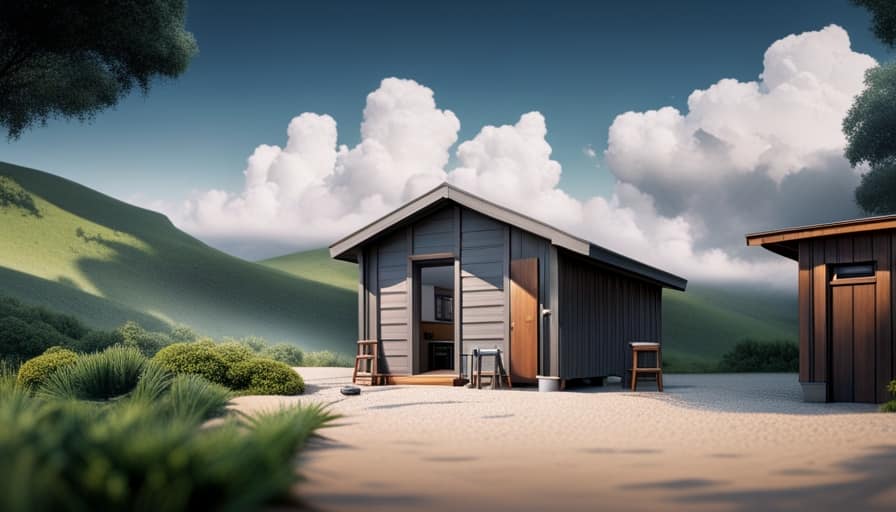
Recently, I have been bothered by these annoying little flies in my home, and I must say, they are really starting to get on my nerves!
But fear not, because I’ve done my research and I’m here to share some expert tips on how to get rid of those tiny flies once and for all.
From identifying the different types of flies to using natural remedies and chemical solutions, I’ve got you covered.
So let’s dive in and bid farewell to these unwanted guests together!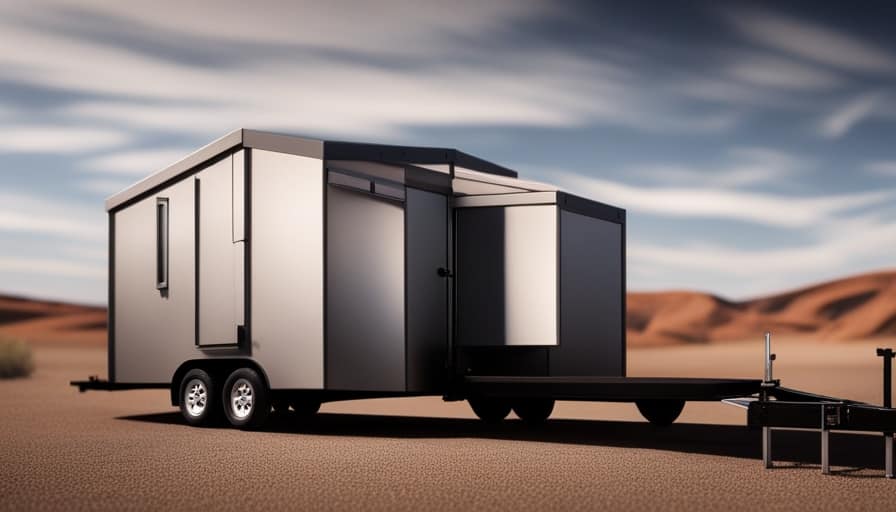
Key Takeaways
- Identifying the common types of tiny flies in your house is important for effective pest control.
- Tiny flies are attracted to moist and decaying organic matter, such as overripe fruits and rotting vegetables.
- Natural remedies, such as vinegar and dish soap solutions, can be used to eliminate tiny flies from your house.
- Preventing future infestations of tiny flies involves maintaining a clean environment, sealing cracks or openings, and storing perishable items properly.
Identifying the Common Types of Tiny Flies in Your House
I can easily identify the common types of tiny flies in my house by observing their physical characteristics and behavior. Flies are attracted to our homes for various reasons, including the presence of food, moisture, and waste. It’s important to note that these flies can pose health risks, as they can carry and spread disease-causing organisms.
To identify the types of flies, I first look at their size and color. For instance, fruit flies are small and have a tan or brown color. Drain flies, on the other hand, are gray or black and have a fuzzy appearance.
Understanding the Reasons Why Tiny Flies Infest Your Home
To understand why tiny flies infest your home, it’s important to consider their attraction to certain conditions and factors within your living space.
These flies, commonly known as fruit flies or drain flies, are attracted to moist and decaying organic matter. They seek out common breeding grounds such as overripe fruits, rotting vegetables, and damp areas in your kitchen or bathroom.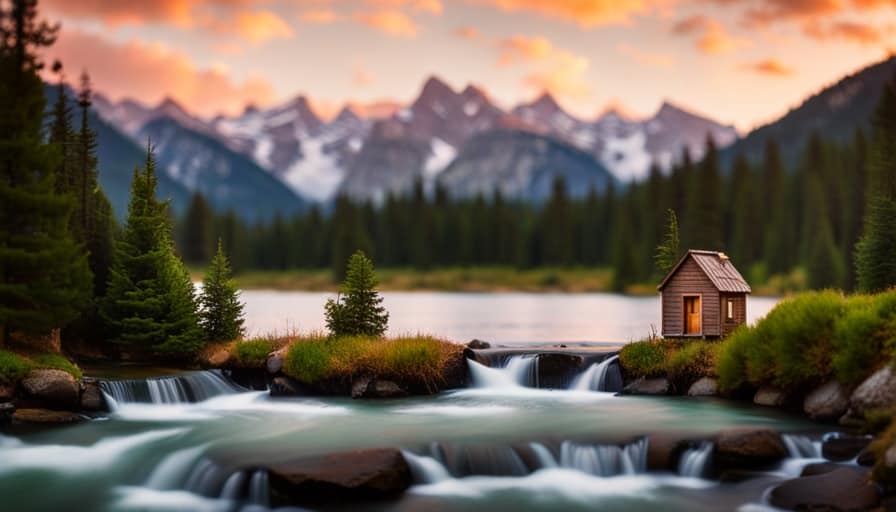
These tiny flies are also drawn to standing water in sinks, drains, and garbage disposals. Signs of a fly infestation include the presence of numerous flies hovering around these areas, as well as the sighting of their larvae or pupae.
It’s crucial to address these conditions and remove any potential breeding grounds to effectively eliminate the infestation and prevent future occurrences.
Natural Remedies to Eliminate Tiny Flies From Your House
One effective way to eliminate tiny flies from your house is by using a combination of vinegar and dish soap. This homemade vinegar fly spray is a non-toxic and practical solution to get rid of those pesky insects.
Here’s how you can make it:
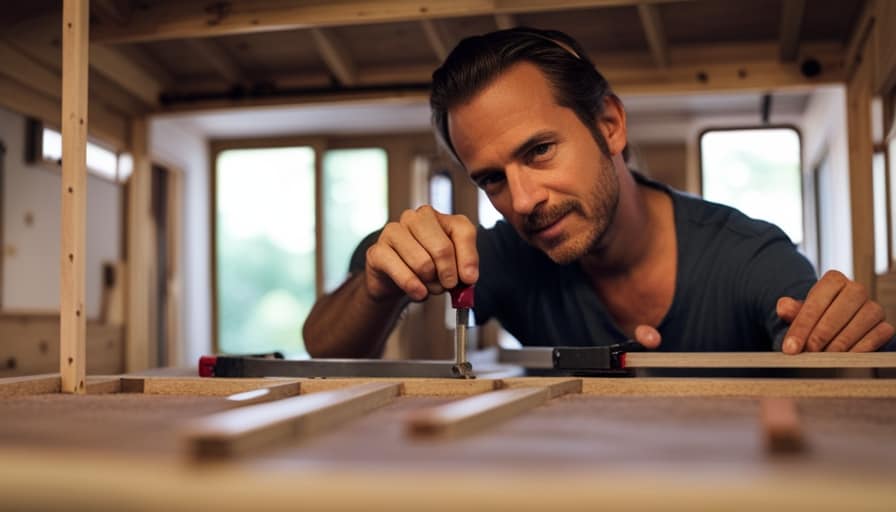
- Mix equal parts of vinegar and water in a spray bottle.
- Add a few drops of dish soap to the mixture. The soap helps to break the surface tension of the liquid, making it easier for the flies to drown.
- Shake the bottle gently to ensure the ingredients are well combined.
- Spray the solution directly onto the flies or in areas where they’re commonly found, such as near windows or fruit bowls.
This natural fly spray isn’t only effective but also safe for your family and pets. It traps and kills the flies without the use of harmful chemicals.
Give it a try and say goodbye to those tiny flies in your house!
Using Chemical Solutions to Get Rid of Tiny Flies in Your Home
Bleach is a strong and effective chemical solution that can help eliminate tiny flies in your home. Chemical solutions, such as bleach, can be highly effective in eliminating tiny flies. The strong properties of bleach make it a powerful tool for killing flies and destroying their breeding grounds. However, it’s important to use caution when using chemical solutions, as they can be harmful to humans and pets if not used properly.
When comparing chemical solutions to natural remedies for getting rid of tiny flies in your house, it’s important to consider their effectiveness.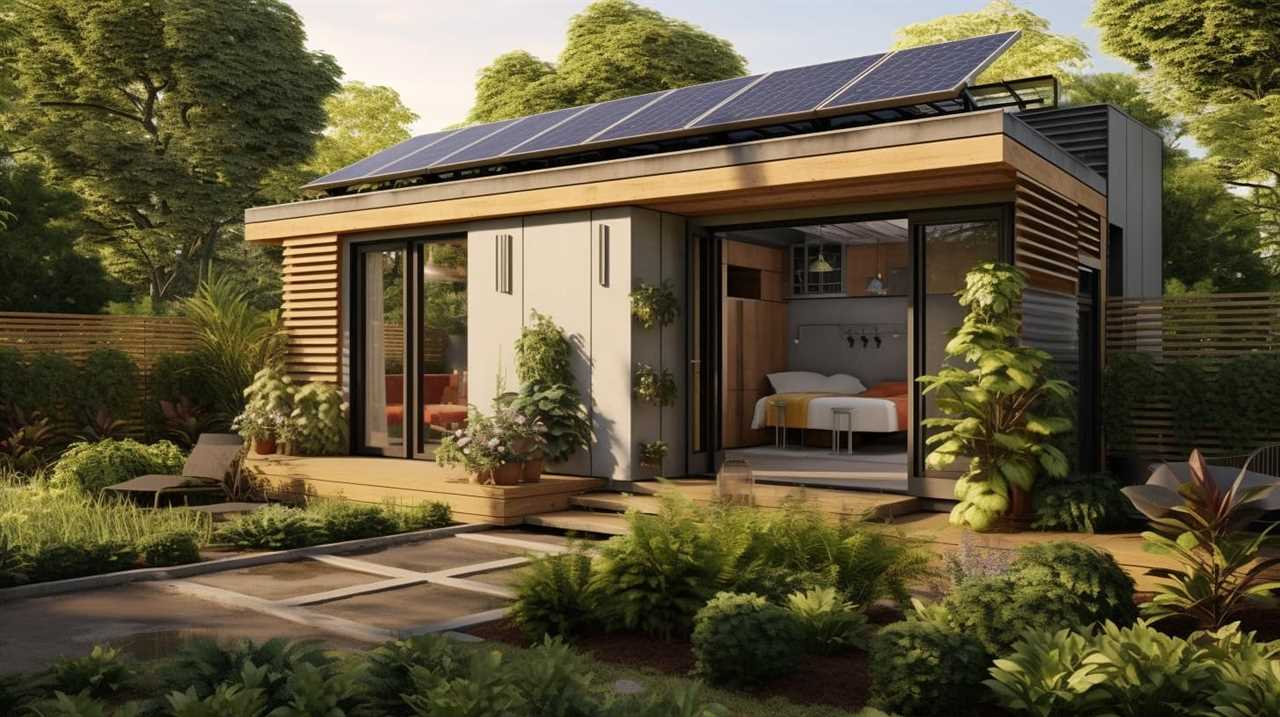
In the next section, we’ll discuss methods for preventing future infestations of tiny flies in your house.
Preventing Future Infestations of Tiny Flies in Your House
I can take steps to prevent future infestations of tiny flies in my house by implementing proper sanitation practices. By maintaining a clean environment, I can greatly reduce the chances of reinfestation. Here are three key practices to incorporate:
-
Regularly clean and sanitize all areas of the house, especially the kitchen and garbage disposal areas. Empty and clean trash cans frequently to prevent any organic matter from attracting flies.
-
Seal any cracks or openings in doors, windows, and screens to prevent flies from entering the house. Repair any damaged screens to ensure they’re intact and functioning properly.
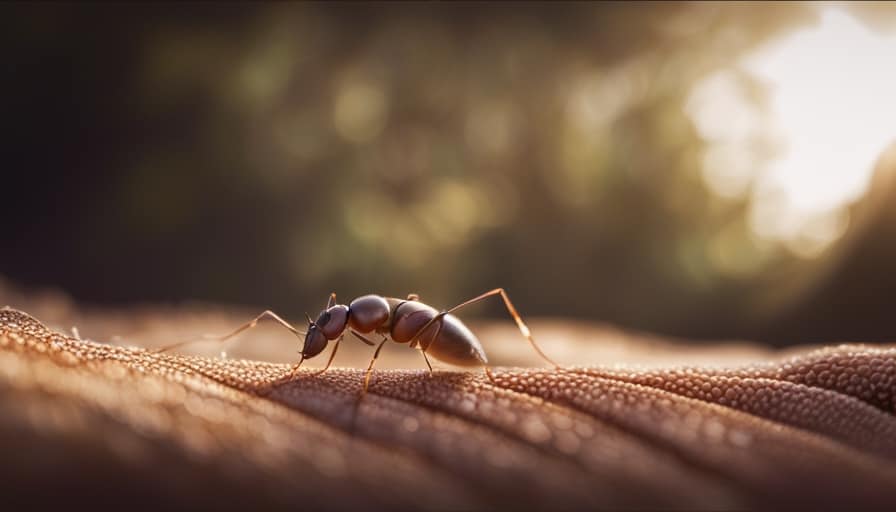
-
Store fruits, vegetables, and other perishable items in sealed containers or in the refrigerator. Flies are attracted to the odors of decaying food, so keeping it properly stored will deter them.
Frequently Asked Questions
How Do Tiny Flies Affect My Health?
Tiny flies can pose health risks, as they can carry bacteria and pathogens that can cause illnesses. To avoid health issues, it’s important to keep your house clean, dispose of trash properly, and eliminate any standing water where they can breed.
Can Tiny Flies Damage My Property?
Tiny flies can indeed cause damage to your property. Their larvae can infest and feed on organic materials, such as wood, causing structural damage over time. It’s important to address the issue promptly to prevent further harm.
Are Tiny Flies Attracted to Specific Food Sources?
Tiny flies are often attracted to specific food sources, such as overripe fruits or decaying organic matter. Understanding their breeding habits and implementing effective prevention methods, like proper sanitation and sealing entry points, can help keep them out of the house.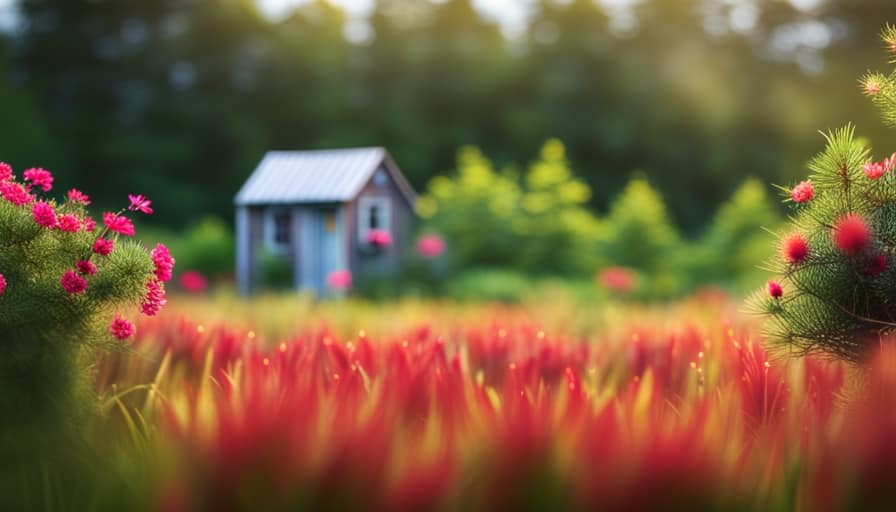
How Long Does It Take for Natural Remedies to Eliminate Tiny Flies?
In my experience, the speed of effectiveness of natural remedies versus chemical solutions for eliminating tiny flies can vary. While some natural remedies may work quickly, others may take longer to fully eliminate the flies. It’s important to be patient and consistent in your efforts.
Are There Any Long-Term Effects of Using Chemical Solutions to Get Rid of Tiny Flies?
Using chemical solutions to eliminate tiny flies in your house can have long-term environmental impacts. Consider using alternative methods like natural remedies or traps that are safer and more sustainable for the ecosystem.
Conclusion
In conclusion, it’s evident that tiny flies can be a nuisance in our homes. By understanding their types and reasons for infestation, we can effectively eliminate them using natural remedies or chemical solutions.
However, it’s crucial to prevent future infestations by maintaining cleanliness and proper waste management. Rest assured, with the right knowledge and approach, you can bid farewell to these pesky insects and enjoy a fly-free home environment.

I’m Theodore, and I love tiny houses. In fact, I’m the author of Tiny House 43, a book about tiny houses that are also tree houses. I think they’re magical places where imaginations can run wild and adventures are just waiting to happen.
While tree houses are often associated with childhood, they can be the perfect adult retreat. They offer a cozy space to relax and unwind, surrounded by nature. And since they’re typically built on stilts or raised platforms, they offer stunning views that traditional homes simply can’t match.
If you’re looking for a unique and romantic getaway, a tree house tiny house might just be the perfect option.
Beginners Guides
How Do I Get Rid of Tiny Ants in My House

- Health risks: Are there any potential diseases that can be transmitted by ants in the house?
- Prevention methods: What are some effective ways to keep ants out of the house to avoid any health risks?
I have been dealing with these stubborn small ants in my home, and I’m sure you can empathize. It seems like I am stuck in an endless game of hide-and-seek with these little creatures.
But fear not, because I’ve done my research and I’m here to share some tried and true methods to get rid of them for good. From natural remedies to chemical solutions, I’ve got you covered.
So let’s roll up our sleeves and say goodbye to those pesky ants together!
Key Takeaways
- Identifying the type of ants in your house is important in order to effectively address the infestation issue.
- Understanding the behavior and nesting habits of tiny ants is essential in finding and eliminating their colonies.
- Natural remedies such as vinegar and water solution, essential oils, and cinnamon can help repel and eliminate tiny ants.
- If natural remedies don’t work, consider using chemical solutions or seeking professional pest control services for a safer and more comprehensive approach.
Identifying the Type of Ants in Your House
I personally find it helpful to identify the type of ants in my house by observing their behavior and physical features. Distinguishing characteristics play a crucial role in determining the species of ants present.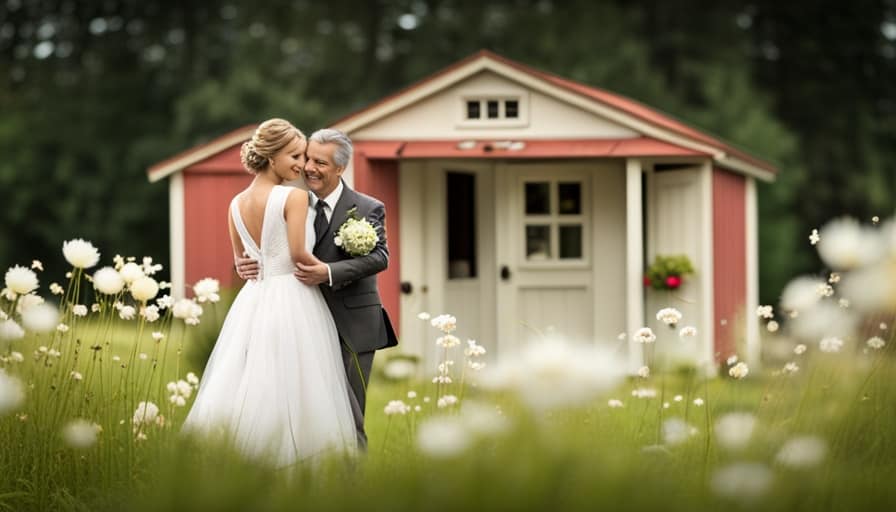
Some common types of household ants include pavement ants, odorous house ants, and pharaoh ants. Pavement ants are dark brown or black with parallel grooves on their heads and thoraxes. Odorous house ants emit a distinct odor when crushed, often described as a rotten coconut smell. Pharaoh ants are light yellow to reddish-brown and have two distinct nodes on their petioles.
In terms of common habitats, ants can be found in various areas of the house, including kitchens, bathrooms, and around food sources. Understanding the behavior and nesting habits of tiny ants is essential in effectively addressing the infestation issue.
Understanding the Behavior and Nesting Habits of Tiny Ants
There are several key factors to consider when understanding the behavior and nesting habits of tiny ants in your house.
These tiny creatures are social insects, living in colonies that can range from a few dozen to thousands of individuals. They communicate and cooperate through chemical signals and pheromones, which helps them locate food sources and establish trails.

When it comes to nesting, tiny ants can build their colonies in various locations, such as in wall voids, under floors, or even in potted plants. Understanding their nesting habits is crucial in effectively eliminating them from your house.
It’s important to note that while ants can be a nuisance indoors, they play a vital role in the ecosystem, helping to decompose organic matter and control other insect populations. However, their presence in food storage areas can contaminate and spoil food, making it necessary to address their infestation promptly and safely.
Natural Remedies to Get Rid of Tiny Ants in Your House
One effective natural remedy to eliminate tiny ants in your house is using a vinegar and water solution. Vinegar, with its strong odor, disrupts their scent trails and confuses them, making it difficult for them to navigate. To create the solution, mix equal parts of white vinegar and water in a spray bottle. Then, simply spray the solution directly onto the ants or their entry points.
Another natural remedy is using essential oils, such as peppermint, lemon, or tea tree oil. These oils have strong scents that repel ants. Mix a few drops of your chosen essential oil with water and spray it in areas where ants are present.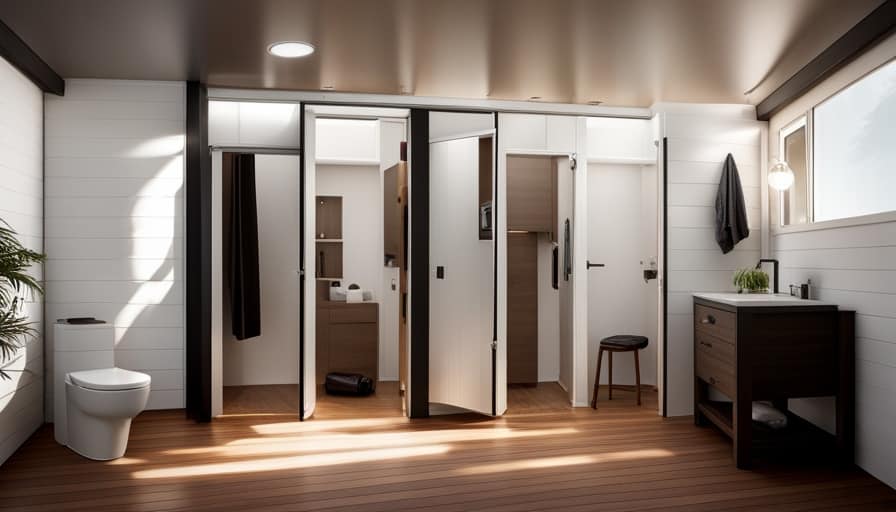
These natural remedies provide an eco-friendly and safe way to get rid of tiny ants in your house. However, if these methods don’t work, it may be necessary to consider chemical solutions for eliminating tiny ants.
Chemical Solutions for Eliminating Tiny Ants
If you’re dealing with a persistent infestation of tiny ants in your house, using insecticide sprays can be an effective solution to eliminate them. However, it is important to consider non-toxic alternatives and professional pest control services for a safer and more comprehensive approach.
| Chemical Solution | How it Works | Pros | Cons |
|---|---|---|---|
| Insecticide sprays | Kills ants on contact | – Easy to use – Widely available – Immediate results |
– Chemical exposure – Harmful to pets and children – Potential environmental impact |
While insecticide sprays can quickly kill ants, they may pose risks to your health and the environment. If you prefer non-toxic alternatives, consider using natural repellents like vinegar, lemon juice, or essential oils. These substances are less harmful and can help deter ants from entering your home.
Another option is to hire professional pest control services. They have the expertise and specialized equipment to effectively eliminate ant infestations. Professionals can also assess the extent of the problem and provide long-term solutions to prevent future infestations.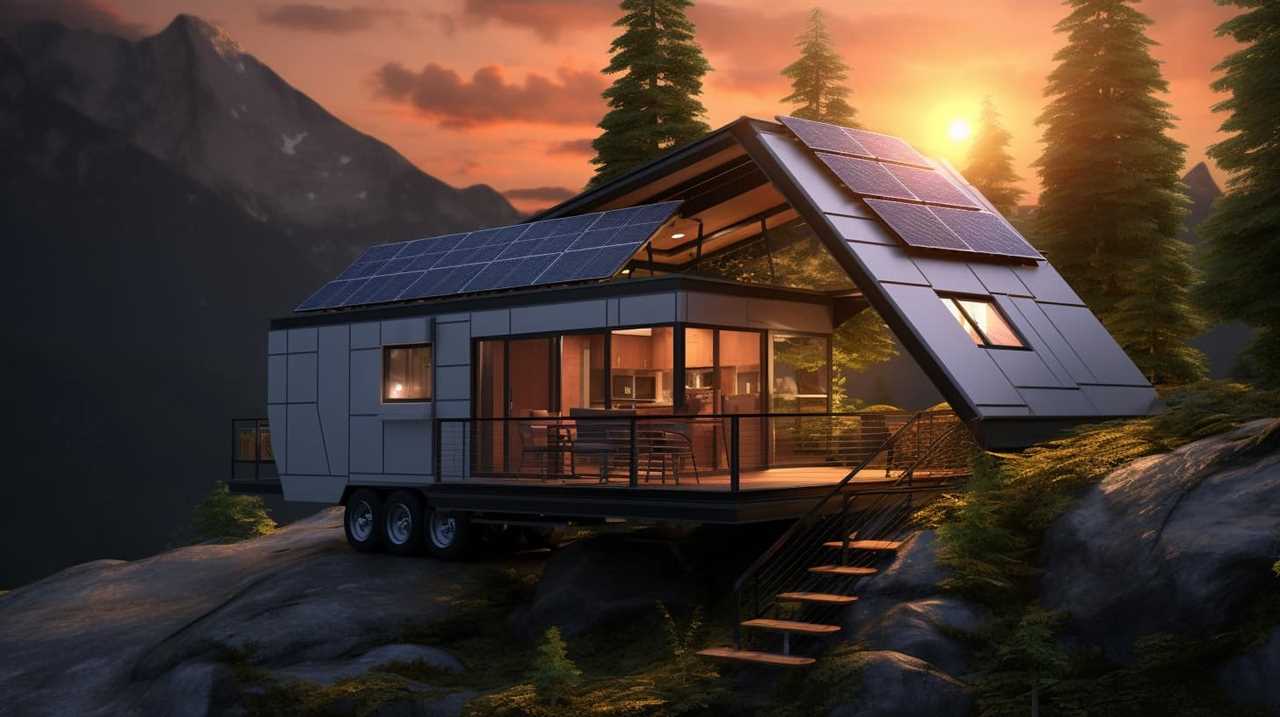
Preventing Future Infestations: Tips and Tricks
When I encountered a persistent infestation of tiny ants in my house, I took proactive steps to prevent future infestations. Here are some effective ant proofing techniques for your home and long-term strategies for keeping ants out:
-
Seal cracks and crevices: Inspect your house for any openings where ants can enter, such as gaps around doors, windows, and pipes. Use caulk or weatherstripping to seal these entry points.
-
Keep your house clean: Clean up food and drink spills promptly, and store food in airtight containers. Wipe down countertops and sweep floors regularly to remove any crumbs or residue that may attract ants.
-
Remove potential ant habitats: Trim back vegetation that’s in contact with your house, as ants can use it as a bridge to enter. Also, keep firewood and other outdoor items away from the foundation.
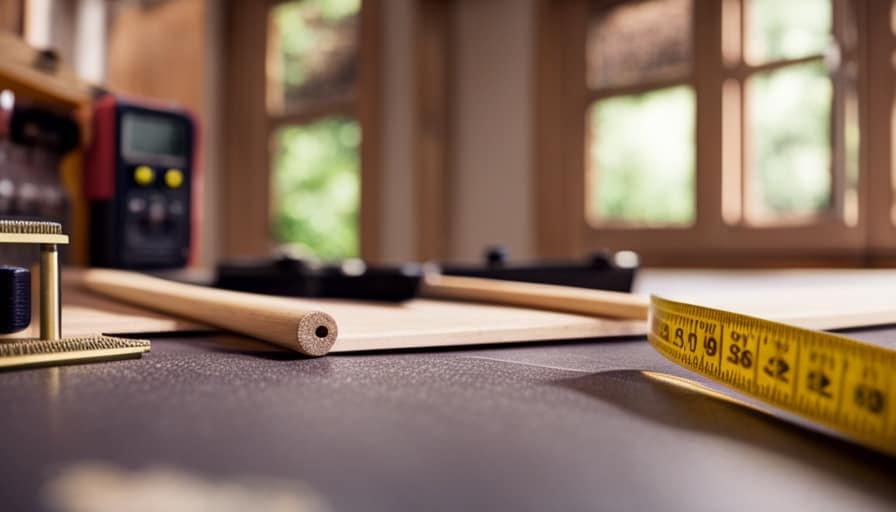
-
Use natural deterrents: Certain scents like peppermint, cinnamon, and vinegar can repel ants. Spray these substances around entry points or wipe down surfaces to discourage ants from entering.
Frequently Asked Questions
How Do I Get Rid of Ants in My Garden?
To get rid of ants in my garden, I use organic pest control methods and natural ant repellents. These methods are effective in keeping ants away and maintaining a healthy garden environment.
Can I Use Vinegar to Kill Ants?
Yes, vinegar can be used to kill ants. However, there are also other natural ant repellents that you can consider using as alternatives to vinegar.
What Should I Do if I Have a Severe Ant Infestation?
If I have a severe ant infestation, I would first focus on prevention tips such as sealing entry points and removing food sources. If the problem persists, I would consider professional ant extermination options for effective and long-lasting results.
Are There Any Health Risks Associated With Ants in the House?
There are potential health risks associated with ants in the house. They can contaminate food, spread bacteria, and even cause allergies. It’s important to take preventive measures to avoid these risks.
Can I Use Essential Oils to Repel Ants?
I find that using essential oils for ant control can be effective. However, it’s important to consider the pros and cons of natural ant repellents. While they are safe and eco-friendly, they may not be as potent as chemical options.
Conclusion
In conclusion, by identifying the type of ants in your house, understanding their behaviors and nesting habits, and implementing natural or chemical remedies, you can effectively get rid of tiny ants.
However, prevention is key to avoiding future infestations. Just as a fortress protects its kingdom from invaders, taking proactive measures will safeguard your home from these pesky pests.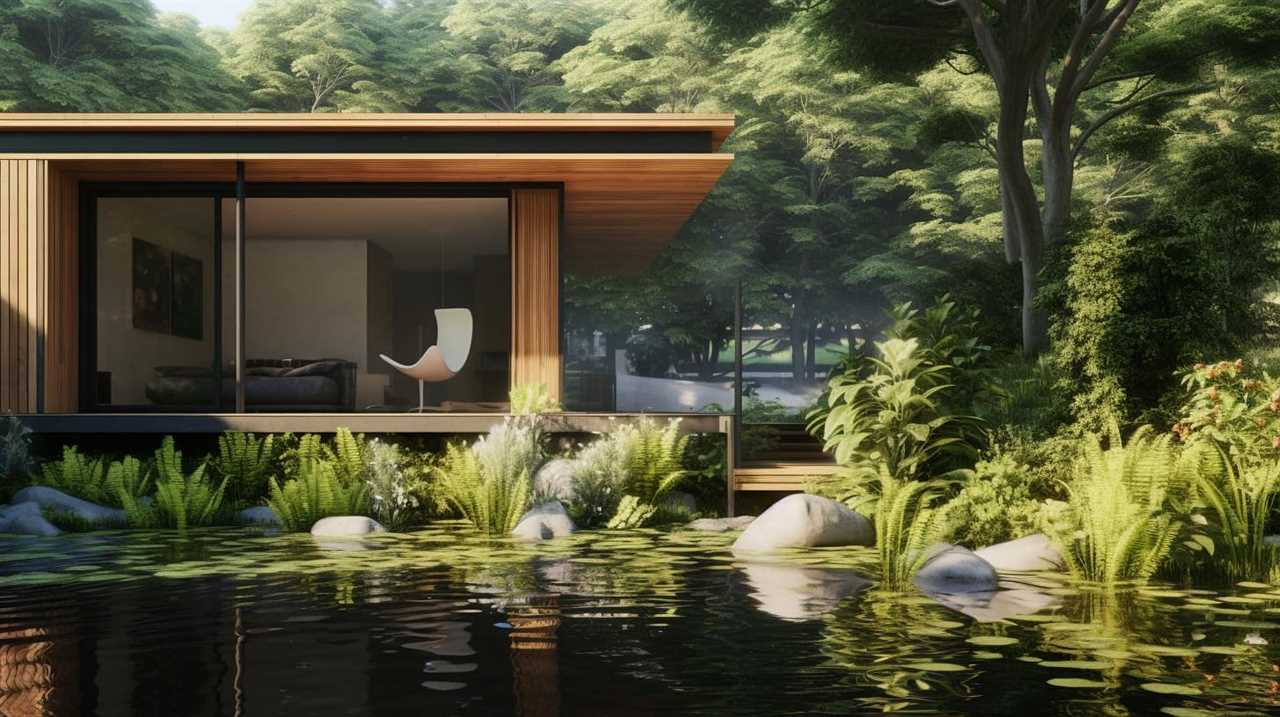
Stay vigilant and maintain cleanliness to ensure a ant-free environment.
I’m Theodore, and I love tiny houses. In fact, I’m the author of Tiny House 43, a book about tiny houses that are also tree houses. I think they’re magical places where imaginations can run wild and adventures are just waiting to happen.
While tree houses are often associated with childhood, they can be the perfect adult retreat. They offer a cozy space to relax and unwind, surrounded by nature. And since they’re typically built on stilts or raised platforms, they offer stunning views that traditional homes simply can’t match.
If you’re looking for a unique and romantic getaway, a tree house tiny house might just be the perfect option.
Beginners Guides
How Cheap Can You Build a Tiny House

Constructing a small house is akin to figuring out a puzzle – it can be difficult, but the payoff is valuable. As someone who enjoys discovering inventive answers, I sympathize with the longing to create a gorgeous home without breaking the bank.
In this article, we’ll explore the factors that affect the cost of building a tiny house and discover budget-friendly materials and labor-saving strategies. Join me on this journey to uncover just how cheap you can build your dream tiny house.
Key Takeaways
- Choosing the right location in a rural area with lower land prices and fewer building restrictions can significantly affect the cost of building a tiny house.
- Using alternative building methods such as reclaimed materials or repurposed items can help reduce costs.
- Implementing cost-saving techniques and building on a budget are important factors in building a cheap tiny house.
- Utilizing budget-friendly building materials, such as affordable insulation options and low-cost flooring alternatives, can also contribute to building a cheap tiny house.
Factors Affecting the Cost of Building a Tiny House
What are the factors that affect the cost of building a tiny house?
When it comes to building a tiny house on a budget, there are several cost-saving techniques and alternative building methods that can significantly impact the overall cost.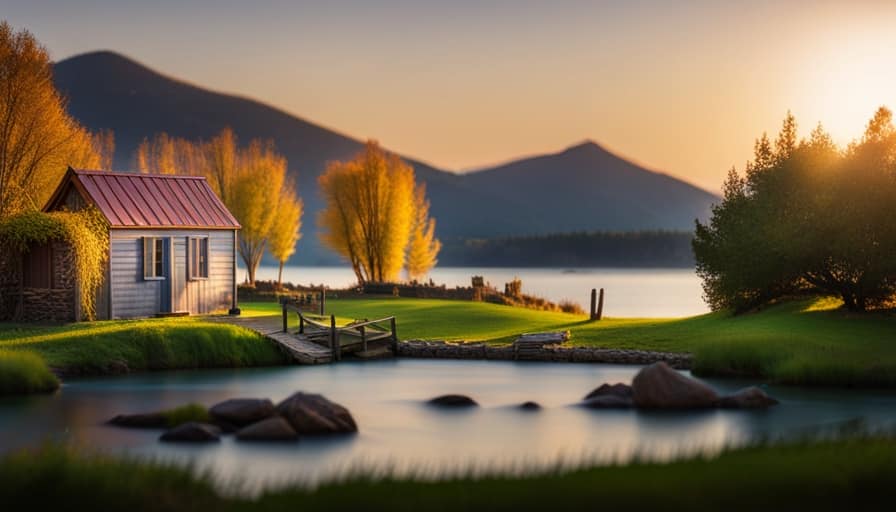
One of the main cost-saving techniques is choosing the right location. Building in a rural area with lower land prices and fewer building restrictions can help keep costs down.
Another factor that affects the cost is the size and design of the tiny house. The simpler the design, the more cost-effective it will be.
Additionally, using alternative building methods such as reclaimed materials or repurposed items can also help reduce costs.
By considering these factors and implementing cost-saving techniques, it’s possible to build a tiny house on a budget.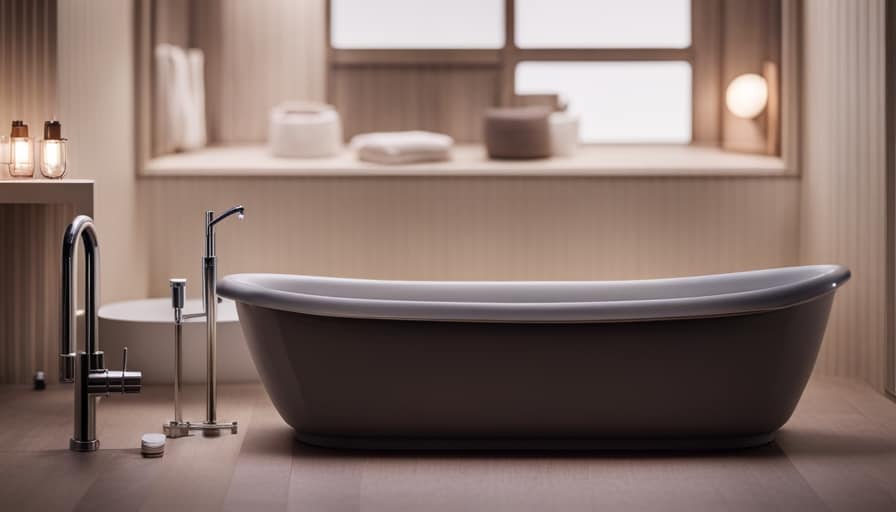
Transitioning into the subsequent section about budget-friendly tiny house building materials, let’s explore how the choice of materials can further impact the overall cost.
Budget-Friendly Tiny House Building Materials
When it comes to building a tiny house on a budget, I can find affordable building materials that will help keep costs down. One area where I can save money is by choosing affordable insulation options. Instead of expensive spray foam insulation, I can opt for alternatives such as fiberglass batts or rigid foam boards. These options are cost-effective and still provide good insulation for the tiny house. Additionally, I can consider low-cost flooring alternatives to save money. Instead of hardwood or tile, I can use vinyl plank flooring or laminate flooring, which are both affordable and durable. By making smart choices when it comes to insulation and flooring, I can build a budget-friendly tiny house without compromising on quality.
| Affordable Insulation Options | Low Cost Flooring Alternatives |
|---|---|
| Fiberglass batts | Vinyl plank flooring |
| Rigid foam boards | Laminate flooring |
Strategies for Saving Money on Tiny House Design
To save money on my tiny house design, I can employ cost-saving strategies such as utilizing multipurpose furniture and maximizing storage space. By incorporating cost-effective design options and implementing DIY tiny house building techniques, I can create a functional and affordable living space.
One key strategy is to choose furniture that serves multiple purposes, such as a sofa that can be converted into a bed or a dining table that can be folded away when not in use. This not only saves money on buying separate pieces of furniture but also maximizes the use of limited space.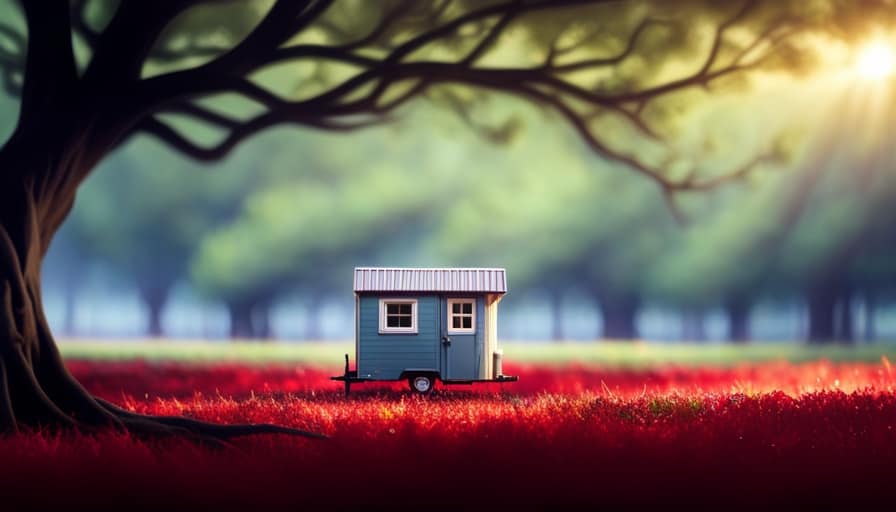
Another cost-saving strategy is to maximize storage space by utilizing built-in shelving, under-bed storage, and wall-mounted organizers. This eliminates the need for additional storage furniture and keeps the space clutter-free.
Creative Ways to Reduce Labor Costs in Tiny House Construction
I can significantly reduce labor costs in tiny house construction by hiring a small team of skilled workers instead of a large crew. This approach allows for effective coordination and streamlined communication, resulting in increased efficiency and reduced labor hours.
Here are some creative ways to further reduce labor costs in tiny house construction:
-
Utilize DIY construction techniques: Encourage the use of DIY construction techniques, where homeowners can actively participate in the building process. This not only reduces labor costs but also creates a sense of ownership and satisfaction.
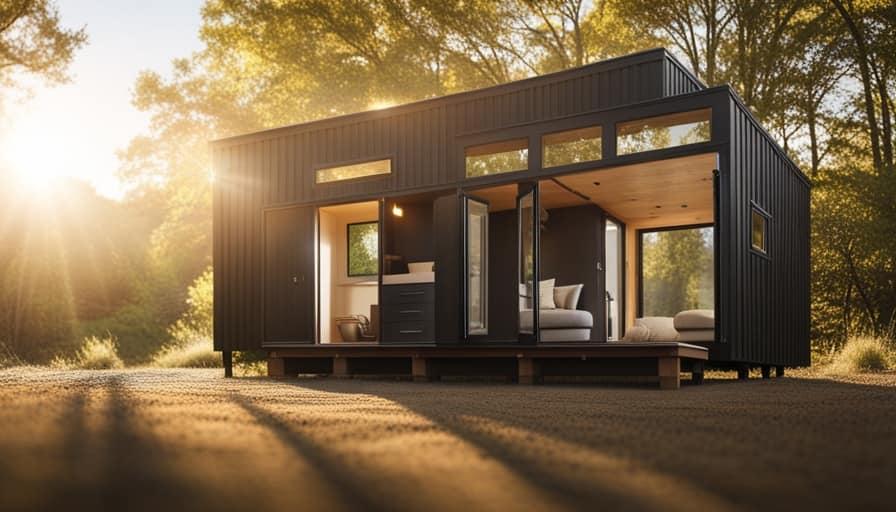
-
Incorporate alternative energy sources: Explore the use of alternative energy sources such as solar panels or wind turbines. By integrating these systems during the construction phase, you can avoid additional labor costs associated with retrofitting.
-
Optimize material usage: Carefully plan and optimize the use of materials to minimize waste. This can be achieved by accurately measuring and cutting materials, as well as repurposing leftover materials for other parts of the project.
-
Prioritize efficient design: Focus on designing a space that maximizes functionality and minimizes unnecessary labor-intensive features. This includes thoughtful space planning, utilizing multipurpose furniture, and incorporating efficient storage solutions.
Implementing these strategies won’t only help reduce labor costs but also contribute to a sustainable and budget-friendly tiny house construction process.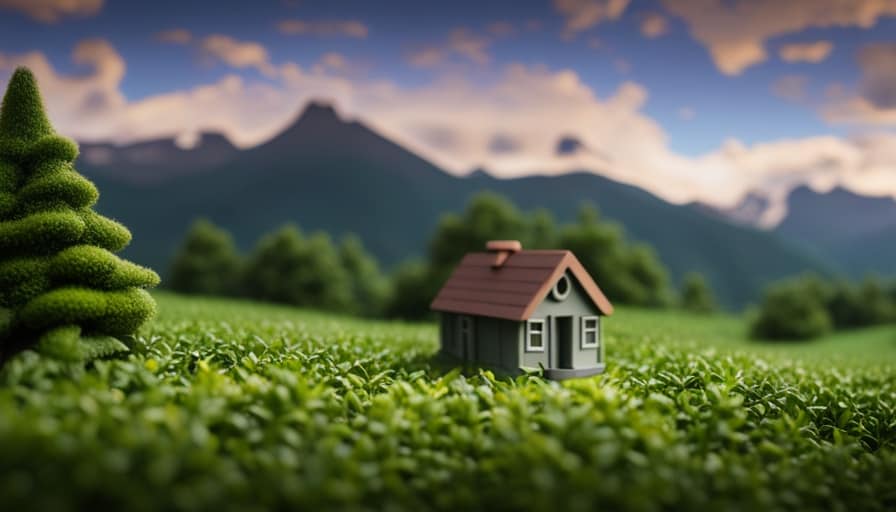
Tips for Finding Affordable Land for Your Tiny House
By researching online listings and networking with local real estate agents, I can easily find affordable land for my tiny house. It is important to explore alternative financing options for purchasing land for a tiny house to keep costs low. One option is owner financing, where the seller acts as the lender and allows you to make monthly payments instead of obtaining a traditional mortgage. Another option is crowdfunding, where you can raise funds from a community of supporters who believe in your tiny house project. Additionally, negotiating with local municipalities for reduced fees and regulations for tiny house living can save you money in the long run. Some municipalities may be open to creating special zoning or permitting regulations for tiny houses, making it easier and more affordable to live in them.
| Financing Options | Benefits |
|---|---|
| Owner Financing | Lower interest rates, flexible payment terms |
| Crowdfunding | Community support, no need for traditional loans |
| Negotiating with Local Municipalities | Reduced fees, simplified regulations |
Finding affordable land for your tiny house is a crucial step in building your dream home while staying within your budget. With the right research, networking, and negotiation skills, you can make your tiny house dreams a reality.
Frequently Asked Questions
What Are the Most Common Mistakes to Avoid When Building a Tiny House on a Tight Budget?
Common pitfalls to avoid when building a tiny house on a tight budget include overestimating DIY skills, not researching local codes and regulations, and not budgeting for unexpected expenses. Cost saving tips include using reclaimed materials and prioritizing essential features.
Are There Any Financing Options Available for Building a Tiny House?
Financing options for building a tiny house include personal loans, RV loans, and construction loans. Pros include flexibility, ownership, and the opportunity to live mortgage-free. Cons may include higher interest rates and stricter qualification requirements.
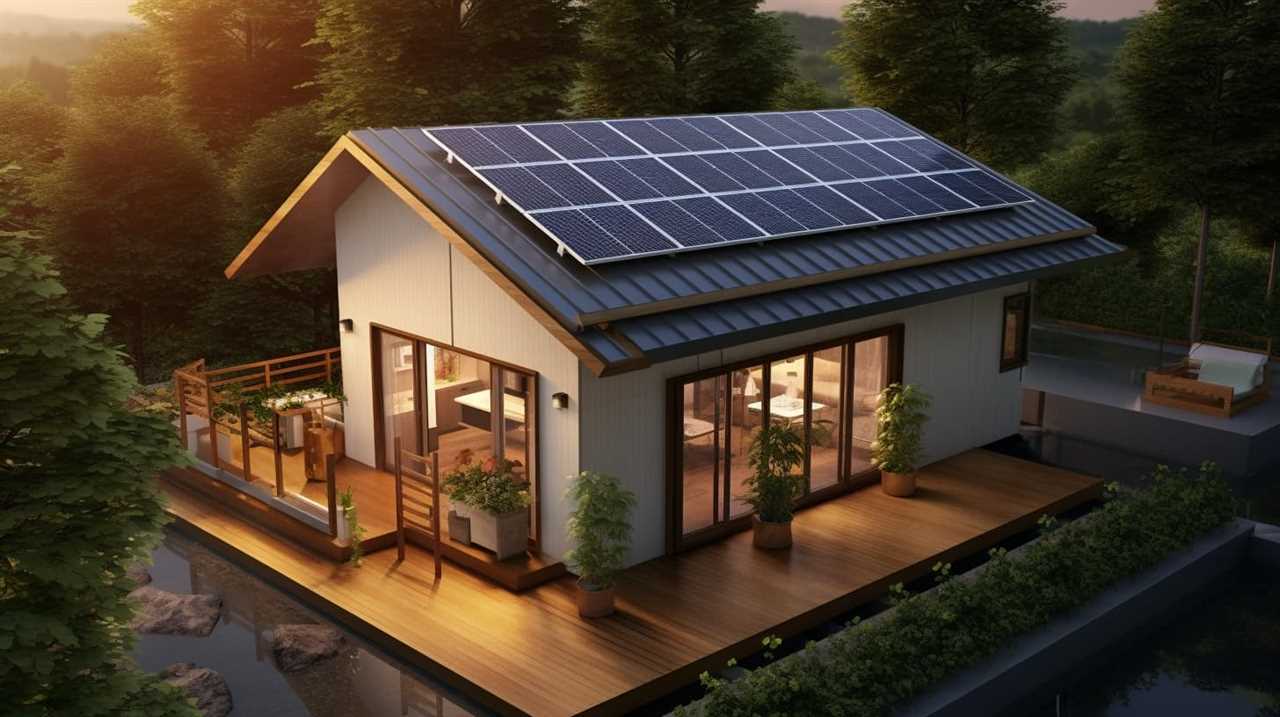
How Much Does It Cost to Maintain a Tiny House on a Yearly Basis?
Maintaining a tiny house on a yearly basis can be cost-effective. By embracing the benefits of living in a tiny house vs. a traditional home and following tips for minimizing maintenance costs, I can save money and enjoy a simpler lifestyle.
Can You Build a Tiny House Using Recycled or Salvaged Materials?
Using recycled and salvaged materials for a tiny house not only saves money, but also gives a sense of purpose and accomplishment. It’s a creative way to build sustainably and reduce waste while creating a unique and personalized home.
Are There Any Legal Restrictions or Regulations to Consider When Finding Land for a Tiny House?
When finding land for a tiny house, it’s important to consider legal restrictions and zoning regulations. Land requirements vary, and financing options may be limited. Maintenance costs can be lower, and eco-friendly building materials are often used.
Conclusion
In conclusion, building a tiny house can be an affordable and cost-effective option for those looking to downsize or live a more minimalist lifestyle. By considering factors such as materials, design strategies, and labor costs, it’s possible to build a tiny house on a tight budget.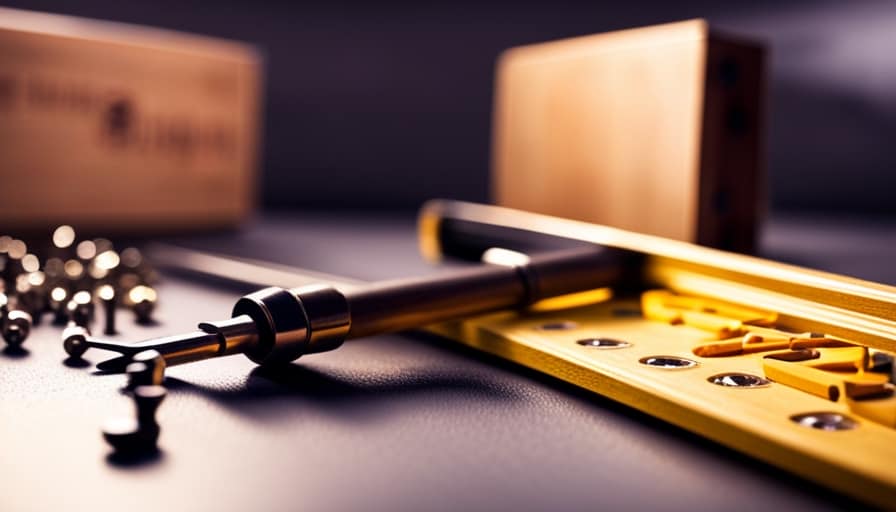
With a little creativity and resourcefulness, you can achieve your dream of owning a tiny house without breaking the bank. So why wait? Start planning and building your own tiny house today!
I’m Theodore, and I love tiny houses. In fact, I’m the author of Tiny House 43, a book about tiny houses that are also tree houses. I think they’re magical places where imaginations can run wild and adventures are just waiting to happen.
While tree houses are often associated with childhood, they can be the perfect adult retreat. They offer a cozy space to relax and unwind, surrounded by nature. And since they’re typically built on stilts or raised platforms, they offer stunning views that traditional homes simply can’t match.
If you’re looking for a unique and romantic getaway, a tree house tiny house might just be the perfect option.
-

 Beginners Guides2 weeks ago
Beginners Guides2 weeks agoHow To Buy A Tesla Tiny House
-

 Energy Efficiency2 months ago
Energy Efficiency2 months agoBest Tiny Homes For Cold Climates
-

 Beginners Guides2 weeks ago
Beginners Guides2 weeks agoTiny House Nation Where Are They Now Stephanie
-

 Tiny House Resources (e.g., legalities, cost, insurance, FAQs)2 months ago
Tiny House Resources (e.g., legalities, cost, insurance, FAQs)2 months agoDo Tiny Homes Need Planning Permission?
-

 Beginners Guides3 weeks ago
Beginners Guides3 weeks agoFrom The Show Tiny House Nation How Many Keep Their Tiny House?
-

 Beginners Guides2 months ago
Beginners Guides2 months agoUsing a Climbing Net For Treehouse Construction
-

 Beginners Guides2 months ago
Beginners Guides2 months agoHow to Build a Treehouse Without Drilling Into the Tree
-

 Beginners Guides3 weeks ago
Beginners Guides3 weeks agoTiny House Nation Who Pays For The Houses




